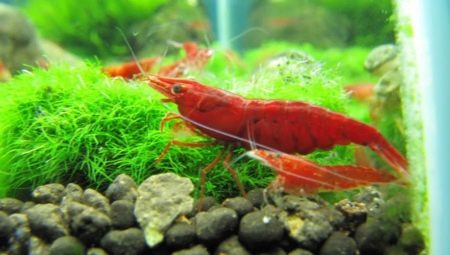Cherry shrimps are very popular among aquarium lovers. They are unpretentious and undemanding creatures that are characterized by a calm disposition, ease of breeding, and excellent survivability. Such shrimps are bright and colored, they can become a worthy decoration of any artificial pond.
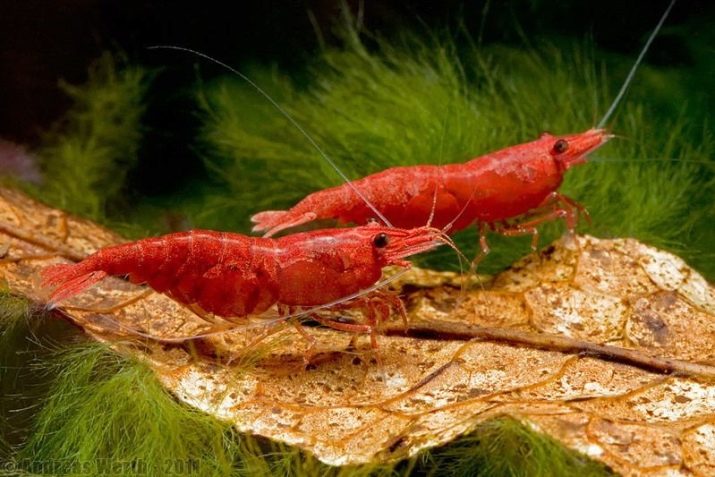
Description
Similar red shrimp are also known among aquarists under the name of cherry, their ancestors were whitish and even transparent, but as a result of a long and careful selection, breeders bred the latest breed with a rich shell color. The size of the cherry reaches 2.5-3 cm, less often there are specimens 4 cm long, while females are slightly larger than males.
Shrimps have an elongated elongated body, which, like other crustaceans, consists of a cephalothorax and abdomen. The body itself is light, and the back has a pronounced reddish-pink color. Small whitish spots are noticeable on the paws and claws, the mustache is painted in pale pink. Over their life, cherry prawns repeatedly change their chitinous cover. The saturation of the color directly depends on the characteristics of the content: feed used, light intensity, water temperature and on the neighbors. Such shrimp can literally change their shade before our eyes.
The life expectancy of individuals is small - only 1-1.5 years, so it is not recommended to purchase adult shrimp, since you can not determine their exact age and it is possible that the shrimp will die soon after purchase.
Keep in mind that with illiterate care, the life of the cherry is drastically reduced, usually due to overfeeding and poor water quality.
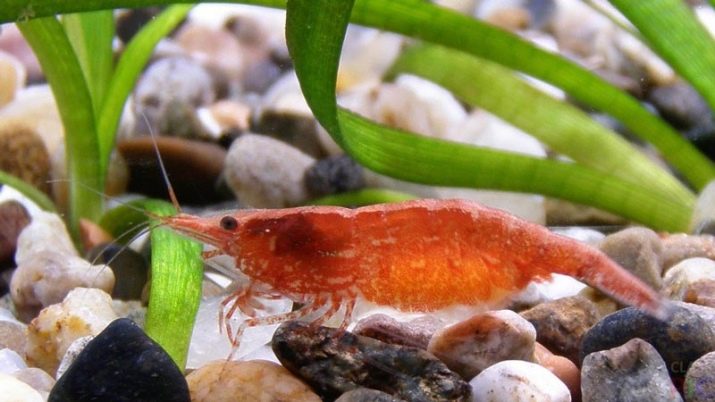
Compatibility
As in the wild, arthropods in artificial ponds become easy prey for predators and die because they have absolutely no protective behavioral mechanisms. Even the smallest fish can harm cherries. Despite this, few aquarists contain shrimp alone - everyone wants the pond to look beautiful and spectacular, so it’s important to choose the right good neighbors for your pets.
Cherry prawns work best with small fish - neon, guppy, mollies, corridor, as well as otocinclus. These pets are characterized by a peaceful disposition, so they will not show aggression towards other inhabitants of the tank.
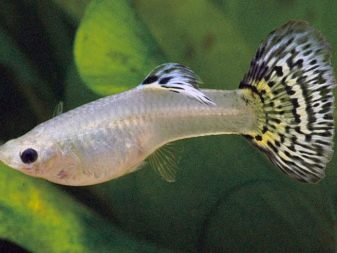
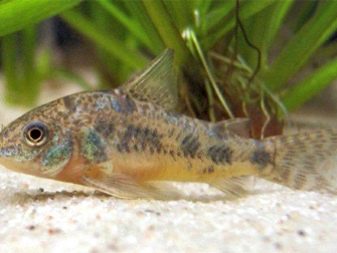
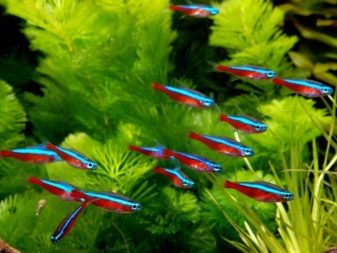
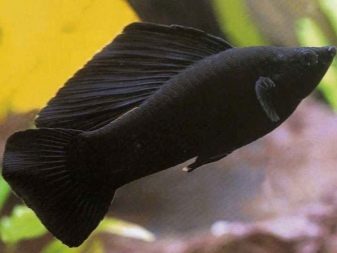
But to populate shrimp in one pond with cichlids and scalars, as well as shrimp Amano is categorically not recommended.
Maintenance and care
Shrimps are extremely unpretentious to the living conditions, so they quickly adapt to life in aquariums. Keep in mind that cherry shrimp belong to flocking creatures, because they feel best in a fairly large flock with "brothers in mind." If the shrimp lives alone, then it will constantly hide among thickets of aquatic plants, and you will not be able to enjoy its appearance. Aquariums of 20 liters or more are needed to contain the cherry; water must meet the following requirements:
- temperature - in the range from 15 to 30 degrees;
- acidity - 7-8 units.
- stiffness - 3-10.
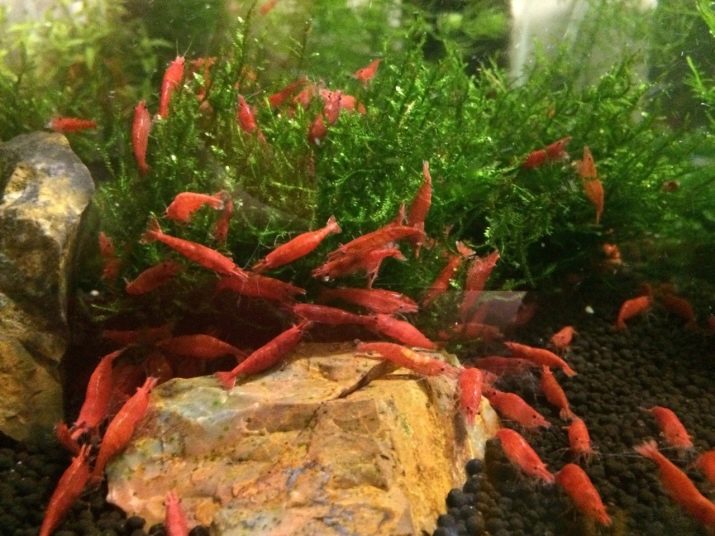
Once every 7-10 days, water must be replaced by 15-20%, adding excessively soft water is undesirable, since under such conditions the quality of chitinous shells deteriorates in shrimps. When caring for "cherries" there are several taboos:
- it is forbidden to change the conditions of shrimp too sharply;
- you can not change water by more than 20% of the total volume of liquid;
- do not feed the shrimp too abundantly;
- it is not recommended to populate many new inhabitants at once; shrimp should have free space.
It is very important to constantly monitor the level of carbon dioxide in the aquarium, and you should also remember that shrimps do not tolerate high concentrations of nitrites, nitrates, copper, and ammonia in water.
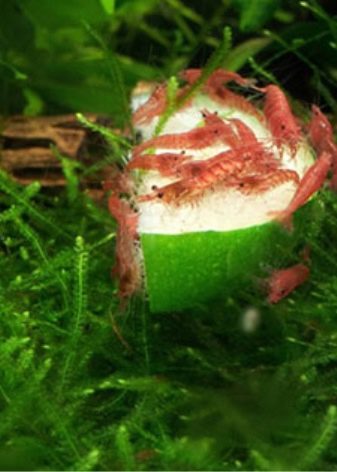
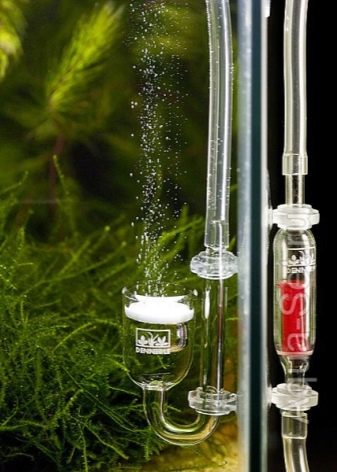
Cherry prefer an aquarium with living vegetation, it is advisable to plant algae clathophores, Indian fern, Javanese moss, as well as any plants floating on the water surface.
In the presence of dense plantings, the absence of an additional filter is allowed, aeration occurs naturally, although it is still better to turn on the compressor at night. When keeping shrimp, breeders often have a problem - “cherries” lose their brightness, there can be several reasons for this:
- Cherry were bred selectively, therefore, in the absence of artificial selection and rejection of pale individuals, they tend to return to a colorless form, it is necessary to carefully select bright individuals when breeding these creatures;
- from time to time it is necessary to “dilute” the existing flock with new shrimps in a saturated color, and it is best to contact a new supplier;
- the color of the food is influenced by the food used - for example, cherry foods that eat foods containing spirulina or carotenoids will be much brighter.
- the color of the cherry depends on the background, for example, if you use a dark background and a black substrate in a pond, the shade of the shrimp will be more saturated.
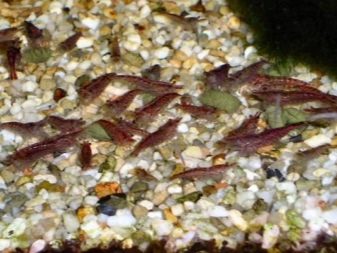

Feeding
Under artificial conditions, cherry shrimp can eat any type of food, they are omnivorous and can even eat the corpses of their relatives and other neighbors, although by their nature they belong to peaceful creatures. If the cherry lives with the fish, then feeding them separately is not worth it, because they will eat up everything they see nearby. If the cherry live in a separate tank, then they can be offered:
- frozen bloodworms;
- fruit tree leaves;
- seaweed;
- vegetables;
- fish food and more.
However, remember - if you feed the shrimp only with frozen food, the shade of the shell will become more saturated, and with frequent use of flakes, on the contrary, the covers turn pale. If the individuals feed on the whole flock, therefore, they liked the food, as dissatisfied individuals usually hide. Cherry shrimps are ready to eat 7 days a week and 24 hours a day, however, they need to be fed only 1 time per day, while the batch size is determined on the basis that all the proposed food should be eaten in a couple of hours.
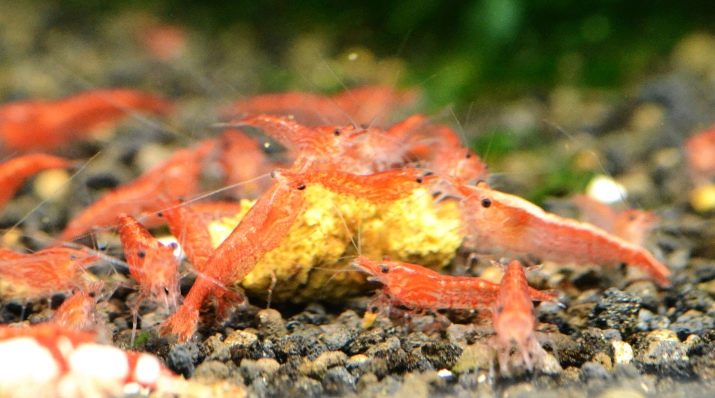
When overfeeding, food debris adversely affects the quality of water, therefore, the health status of shrimp, which can even die.
Breeding
Breeding shrimp-cherry is very easy. Since cherry trees belong to invertebrates, they easily reproduce without human intervention - all that is needed is to place the females and males in a common tank. You can distinguish between males and females by coloring and manners. So, in females the abdomen line is more rounded, in addition, they are much brighter than males, which are small, faded and very nimble. At the age of 2-3 months, a female appears saddle - it is intended for bearing eggs.
When a female is ready to mate, it begins to release its pheromones into the water, giving a signal to the males about its readiness for reproduction. Men, having sensed this aroma, begin to search for a partner, and rapid mating occurs. Immediately after this, the animals move their eggs into the saddle, as a rule, the female carries eggs for about 15-20 days, during which time it is extremely important to maintain cleanliness and the presence of air in the tank. Eggs are greenish or yellow in color, but begin to darken as they grow. Small shrimps of no more than 1 mm in size appear from them, but even in this form they are very similar to their parents in appearance.
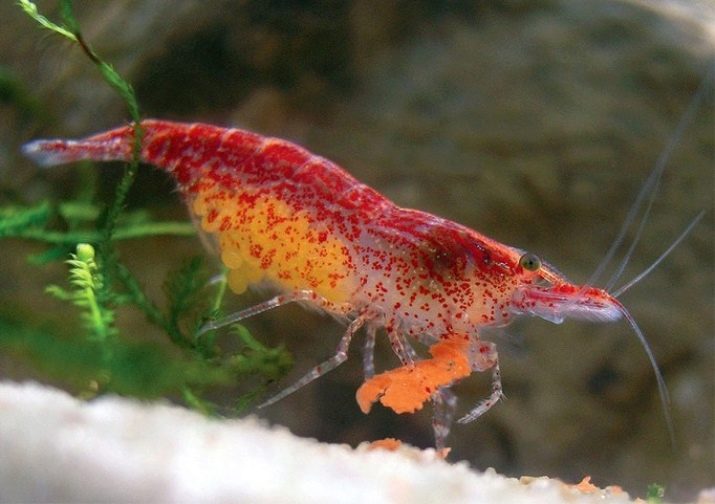
Disease
Aquarium "cherries" often encounter diseases, however, they are not treated, so the affected individuals usually die. The following are the most common cherry problems.
- The attack of chitinous cover by pests. This leads to damage to the gills, muscles and heart, which inevitably leads to the death of the animal.
- Fungal infections occur during the resettlement of infected "newcomers". To avoid this outcome, newly purchased shrimp must be quarantined for at least a month.
- Poisoning with copper or nitrates occurs due to the use of untreated and unprepared water, as well as uncontrolled dilution of the inhabitants of an artificial reservoir. In these conditions, overpopulation often occurs, respectively, the volume of waste products containing nitrogen increases.
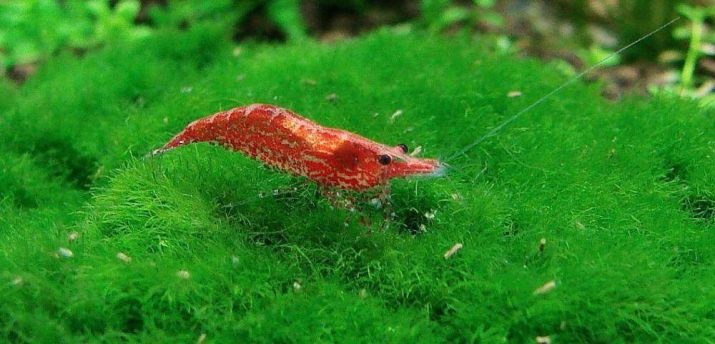
As you can see, cherry shrimp are considered one of the most spectacular and unpretentious aquarium creatures. They reproduce easily and simply, are completely unpretentious to food, so even the most inexperienced aquarist can cope with the care of them.
About cherry shrimp - their breeding, keeping, feeding and compatibility with fish in the aquarium, see the next video.
